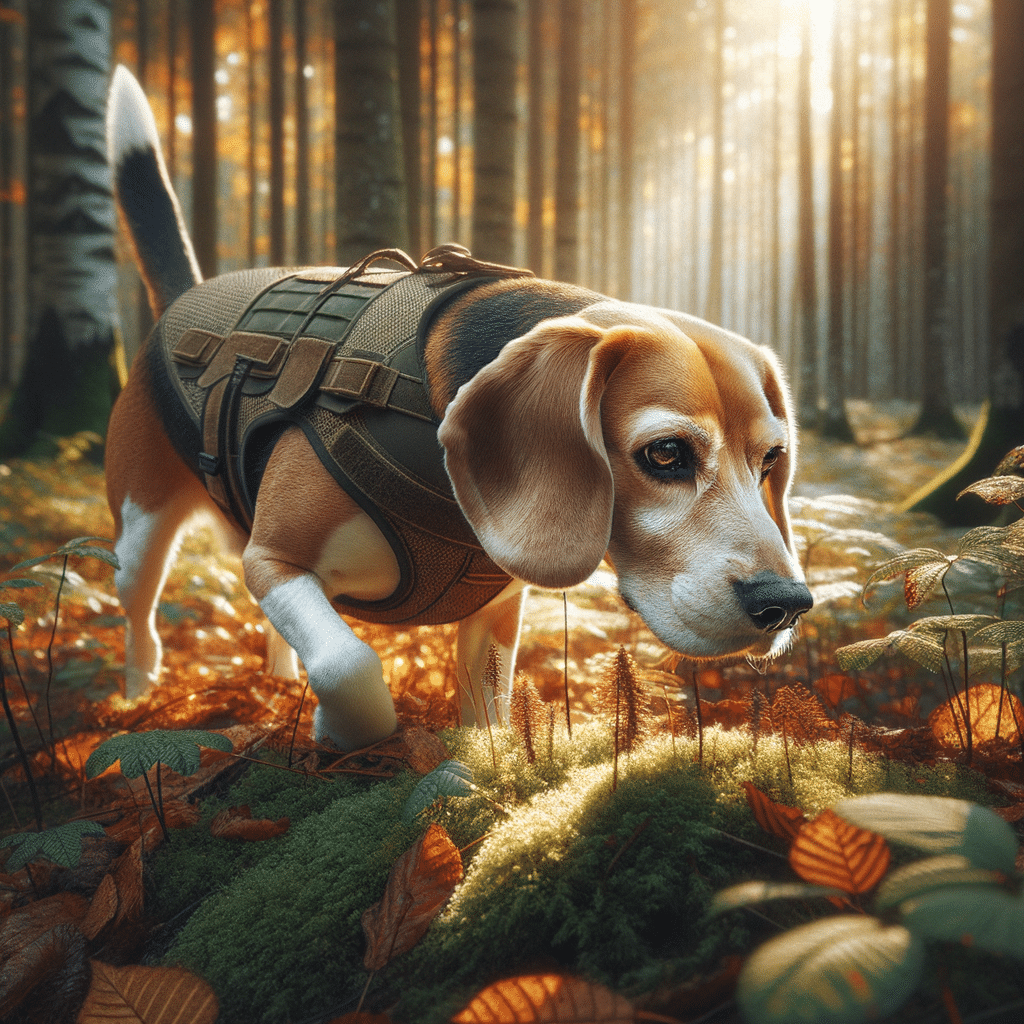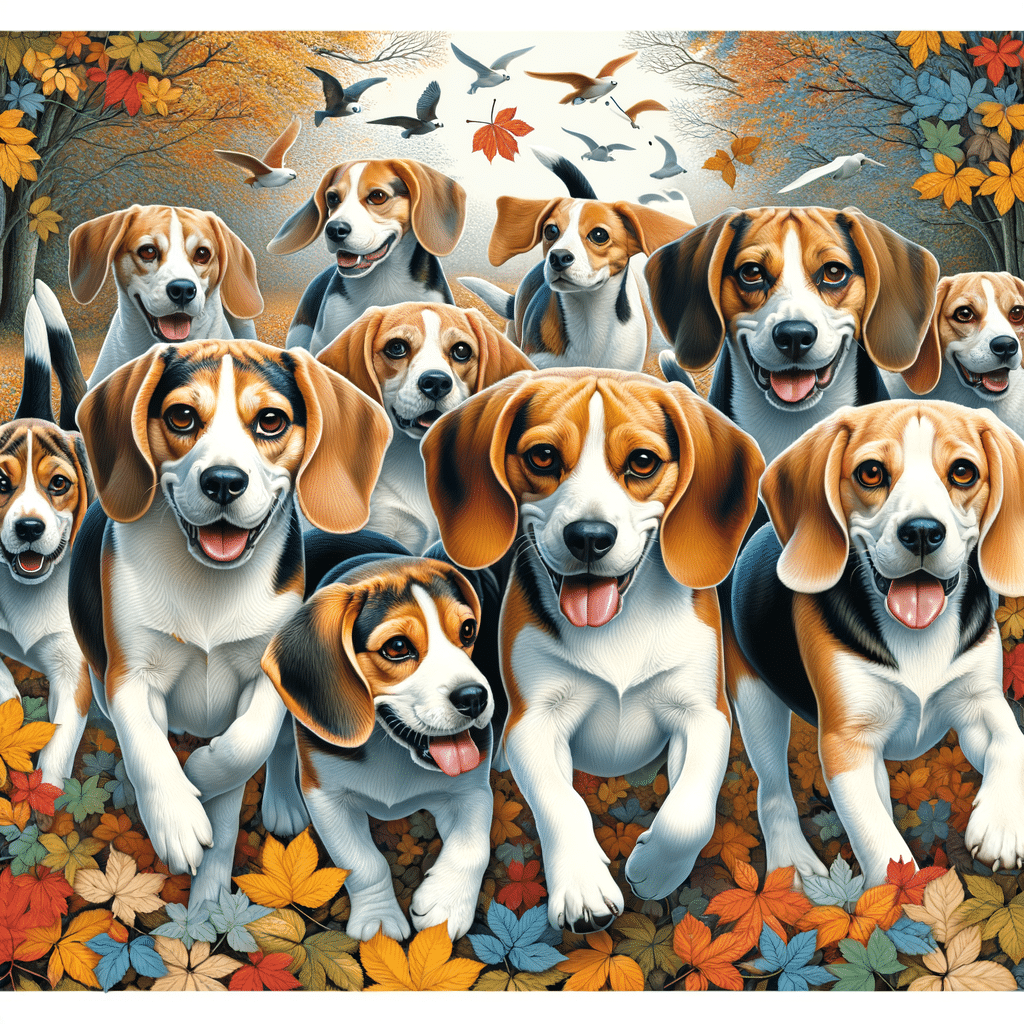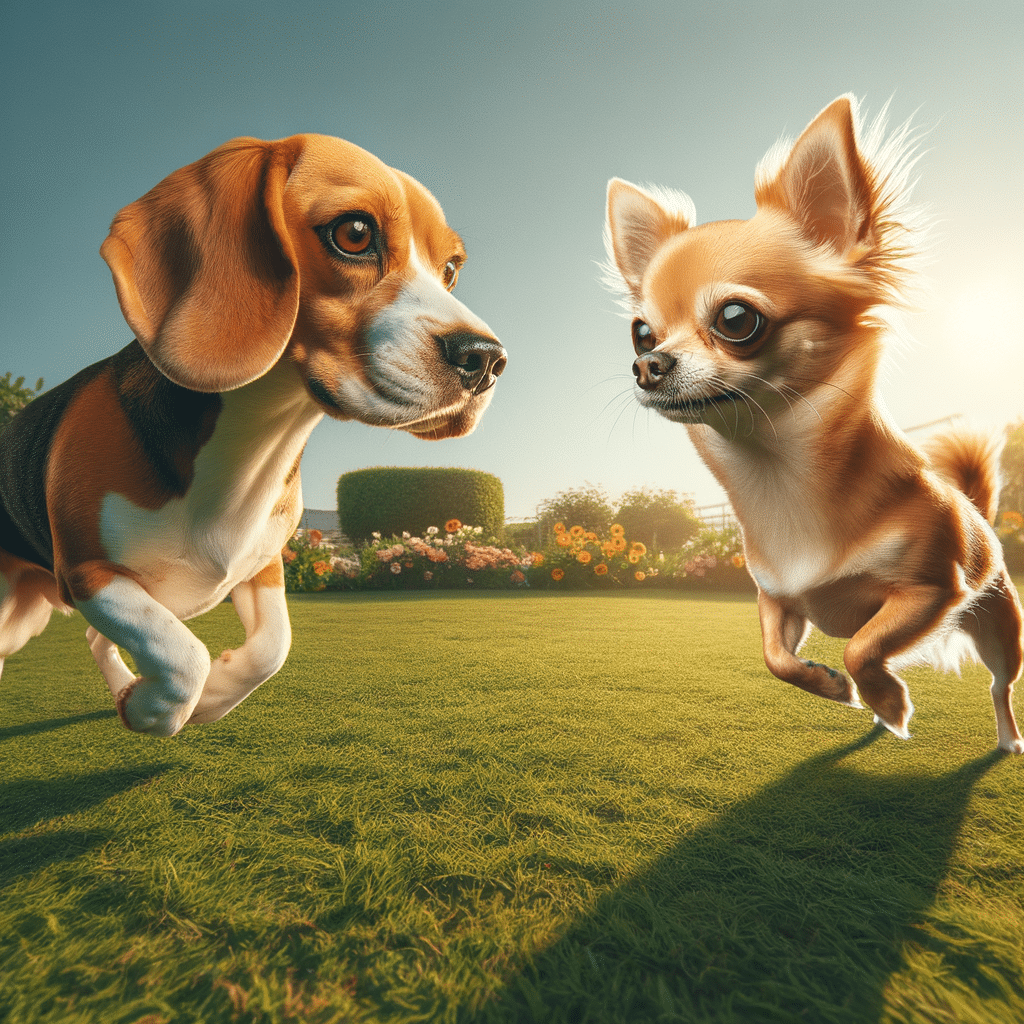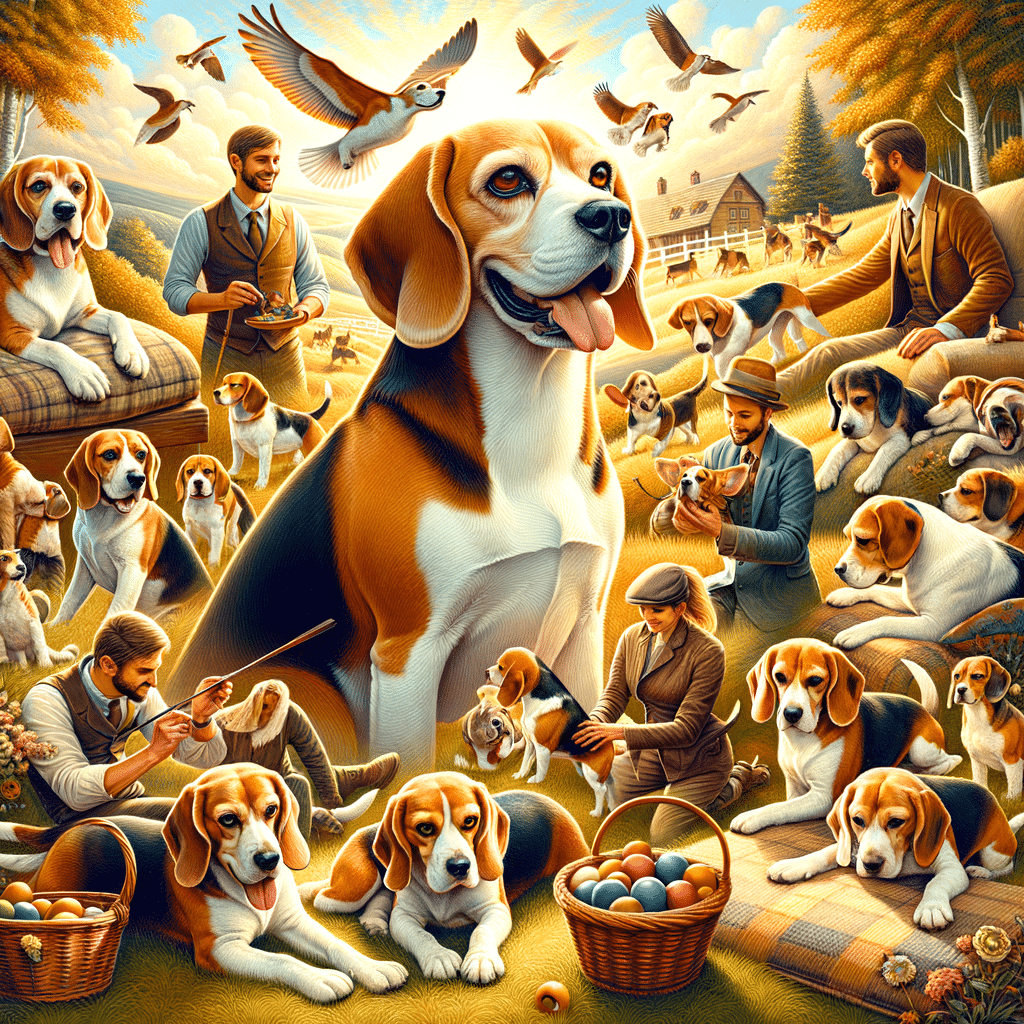When considering a new dog addition to the family, the decision can often boil down to comparing different breeds. For the comparison of beagle vs. cocker spaniel, choosing your companion comes down to matching the dog’s traits with your needs at home.
In This Article
The beagle and cocker spaniel have distinct histories, personalities, and care requirements. Beagles are known for their great sense of smell and tracking instincts, harking back to their origins as hunting dogs. They are typically friendly, curious, and great with families. Cocker spaniels, with their soft, wavy coats, originally bred as hunting dogs, have a gentle demeanor and affectionate nature.
The physical characteristics of these breeds can influence your decision. Beagles are robust, muscular dogs with a sturdy build, while cocker spaniels have a luxurious coat and soulful eyes.
Regarding health and maintenance, beagles generally require less grooming than cocker spaniels, which need regular brushing. Understanding these aspects helps you make an informed decision that aligns with your lifestyle, ensuring a harmonious relationship between the pet and you.
Highlights
- Beagles and cocker spaniels are popular for families but differ in care and grooming needs.
- The beagle is known for its robust build and tracking ability, while a gentle personality distinguishes the cocker spaniel.
- Choosing the right breed involves considering physical attributes, temperament, and the potential health care commitment.
Breed History and Origin
The beagle and cocker spaniel both have storied pasts. Recognized as distinct purebred dog breeds, these two have carved their niches in human hearts and the American Kennel Club (AKC) registry.
Beagle History
Originating from England, the beagle’s history dates back to Roman times, with their ancestors used for hunting due to their keen sense of smell and tracking abilities. By the 1500s, most English gentlemen had pack hounds, and the beagle was established as a breed by Elizabethan times.
Due to their excellent tracking skills, beagles were initially bred for hunting small game. Officially recognized by the AKC in 1885, they have become one of the most popular breeds in the United States, valued both as hunting dogs and affectionate companions.
- Country of origin: England
- AKC recognition year: 1885
Key traits:
- Keen sense of smell
- Skillful tracking abilities
- Popular in hunting and as companions
Cocker Spaniel History
The cocker spaniel’s lineage also finds its roots in Spain, with the term “spaniel” referring to the breed’s Spanish origins. They were noted in history as far back as the 14th century and were brought to England by the Romans.
Spaniels have long been divided into land and water types, and the cocker spaniel, adept at hunting woodcock, got its name from this specific skill. The breed split into American and English types, with the American cocker spaniel becoming recognized by the AKC as a separate breed in 1946. These spaniels have charmed their way as popular family pets in the United States.
- Country of origin: Spain and England
- AKC recognition year:
- English cocker spaniel: 1946
- American cocker spaniel: Separate breed recognition in 1946
Key traits:
- Proficient in hunting woodcock
- Divided into American and English types
- Renowned as family pets
Physical Attributes
In comparing the physical attributes of beagles and cocker spaniels, notable distinctions arise in their size and coat characteristics. These differences play a significant role for potential dog owners in selecting a breed that suits their lifestyle and preferences.
Size Comparison
Beagle
- Size: Medium
- Weight: Typically ranges from 20 to 30 pounds
- Height: Averages between 13 to 15 inches at the withers
Cocker Spaniel
- Size: Small to medium
- Weight: Falls in the range of 20 to 30 pounds
- Height: Stands between 14 to 15 inches at the withers
While both breeds are often considered medium-sized, the beagle generally has a more sturdy and muscular build, whereas the cocker spaniel may exhibit a slightly more refined structure.
Coat Characteristics
Beagle
- Coat: Short double coat
- Colors: Commonly tricolored with combinations of black, tan, white, red, brown, lemon, and blue
Cocker Spaniel
- Coat: Medium-length double coat that can either be slightly wavy or flat
- Colors: Exhibits a wide array of colors including black, various shades of red, tan, brown, and sometimes multi-colors
Both breeds require regular grooming, but the cocker spaniel typically demands more frequent attention due to its longer coat. beagles, with their short double coats, are easier to maintain but shed consistently throughout the year.
Temperament and Personality
Selecting the right dog breed depends heavily on understanding their temperament and personality traits, which can influence their fit within a family or lifestyle. Key differences exist between beagles and cocker spaniels, and it is important for potential owners to consider these traits.
Beagle Behaviors
Beagles are known for their joyful and adventurous spirit. They possess a curious nature that drives them to explore and play, often displaying a spunky attitude. As a breed, they are friendly and generally get along well with other animals and people, including children.
Temperament
- Friendly: Highly sociable with family and strangers alike.
- Joyful: Known for a cheerful disposition.
- Independent: They can be self-reliant and often follow their nose.
- Stubborn: May exhibit determination, requiring patient training.
Beagles are also regarded for their intelligence but may sometimes be stubborn, which can challenge training. However, their sociability makes them well-suited for family life.
Cocker Spaniel Traits
Cocker spaniels are equally affectionate and loving companions, often characterized as gentle and sweet-natured. They typically seek to please their owners and are intelligent, which makes them highly trainable.
- Affectionate: Deeply loving towards their families.
- Sweet: Gentle disposition, often good with kids.
- Patient: More focused during training sessions.
- Social: Enjoys the companionship of humans and pets.
Their desire for human companionship means they thrive on attention and interaction. While less independent than beagles, cocker spaniels are less likely to become distracted and are more attentive to their owners.
Care and Health Considerations
Caring for a beagle or cocker spaniel requires attention to exercise, grooming, and potential health issues. These breeds have specific needs that, when met, can contribute to a healthy, fulfilling life.
Exercise Requirements
Both beagles and cocker spaniels are popular dog breeds with moderate to high energy levels and need regular exercise to maintain their health. Beagles, with their hunting lineage, often need vigorous daily exercise, such as walks or playtime in a secure area, even as an adult medium-sized dog or as a puppy. Cocker spaniels, while also energetic, typically require moderate exercise to manage their energy and prevent obesity. Choosing the right dog food for a small dog helps, too.
Grooming and Maintenance
Beagles
- Grooming needs: Minimal; regular brushing to reduce shedding.
- Maintenance: Low; occasional baths and ear cleaning due to their propensity for ear infections.
Cocker Spaniels
- Grooming needs: High; requires frequent brushing and professional work from a dog groomer to maintain coat health and prevent matting.
- Maintenance: Moderate; like beagles, their ears are cleaned regularly to avoid infections.
Common Health Concerns
Health issues can vary between the two breeds, although there is some overlap in the breed information:
Beagles
- Lifespan: Approximately 12-15 years.
- Common issues: Obesity, epilepsy, allergies, hip dysplasia, and cherry eye.
Cocker Spaniels
- Lifespan: Similarly, around 12-15 years.
- Common issues: Ear infections, cataracts, glaucoma, patellar luxation, and autoimmune diseases like autoimmune hemolytic anemia.
Responsible breeding practices and regular veterinary check-ups are crucial to managing and preventing these health problems. Owners should know each breed’s needs to provide proper care and promote a long and healthy life for their pets.
Frequently Asked Questions
This section addresses common queries by comparing beagles and cocker spaniels in terms of temperament, size, coexistence, and behavior. It is tailored to help potential owners understand the nuances between the two breeds.
What are the differences in temperament between beagles and cocker spaniels?
Beagles’ temperaments tend towards independence and stubbornness. Their strong sense of smell can cause distractions. In contrast, cocker spaniels are typically affectionate, less stubborn, and known for their patience and focus, making them more willing to please their owners.
How do the sizes of beagles compare to those of cocker spaniels?
beagles generally stand between 13 to 15 inches tall at the shoulder and weigh around 20 to 30 pounds, making them a sturdy medium-sized breed. cocker spaniels are slightly smaller, measuring 14 to 15 inches tall and weighing 20 to 30 pounds, but they often possess a more delicate build.
Can beagles and cocker spaniels comfortably coexist?
Both beagles and cocker spaniels are known to be friendly towards children and other dogs when socialized properly. This typically makes for a compatible coexistence, given they have a proper introduction. Training should meet their individual needs for attention and exercise, too.
What should potential owners expect from a beagle and cocker spaniel mix?
A beagle cocker spaniel mix, commonly known as a Bocker, may inherit traits from both breeds. Potential owners should anticipate a friendly, family-oriented dog with a likelihood of a playful personality and a moderate need for grooming and exercise.
Are cocker spaniels considered to be more well-behaved than other breeds?
Cocker spaniels are friendly pets that aim to please you, which can contribute to being well-behaved. However, like any breed, individual behavior varies, and proper training and socialization from an early age are key factors in promoting good behavior.
Do cocker spaniels generally exhibit a calm nature, or are they prone to hyperactivity?
Cocker spaniels typically exhibit a balanced disposition. They have enough energy for playing and engaging in activities, but they can also be calm and content during relaxed periods. With sufficient exercise and mental stimulation, they generally are not overly hyperactive.






